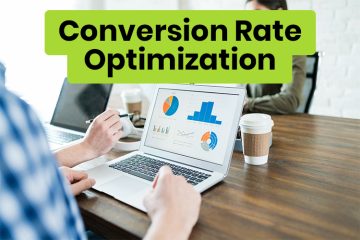Step-by-Step Guide to Product Sourcing Used by Top Companies

In today’s competitive global marketplace, product sourcing has become a critical aspect of business success. The ability to find high-quality products at the right price can significantly impact a company’s profit margins, supply chain efficiency, and overall customer satisfaction. Leading companies, whether they are large corporations or emerging startups, understand that product sourcing isn’t just about finding a supplier—it’s about building long-term partnerships that can scale with their growth.
For businesses aiming to optimize their sourcing strategies, understanding the step-by-step process followed by top companies can provide valuable insights. This guide explores the key stages involved in sourcing products successfully and offers practical advice for building a sourcing strategy that aligns with your company’s goals.
Step 1: Define Your Product Requirements
The first step in product sourcing is to clearly define the type of products you want to source. Top companies understand that having a precise and well-documented set of requirements is critical to finding the right suppliers and ensuring that products meet quality expectations.
Start by asking yourself the following questions:
-
What specific products do you need, and in what quantities?
-
What are the key features or specifications for each product?
-
What are your quality standards?
-
Do you need any certifications or specific testing to meet regulatory requirements?
-
What price range are you targeting?
-
What is the expected lead time for production and delivery?
Companies that succeed in sourcing products always take the time to carefully outline their requirements, creating a blueprint that guides the rest of the process. This clarity helps avoid confusion later on and provides a solid foundation for building strong relationships with suppliers.
Step 2: Conduct Market Research
Once you have a clear understanding of your product requirements, the next step is market research. This phase is critical to identifying potential suppliers and understanding the broader market conditions that could affect your sourcing strategy.
Research involves examining both domestic and international suppliers, assessing their reliability, and determining if they can meet your needs. Top companies leverage online sourcing platforms like Alibaba, Global Sources, and ThomasNet to find reputable suppliers. They also attend trade shows and industry events to meet suppliers face-to-face and gain a deeper understanding of market trends.
In addition to finding suppliers, conducting research also involves understanding market dynamics, such as:
-
Product demand trends
-
Pricing benchmarks
-
Competitor sourcing strategies
-
Potential risks related to political instability, tariffs, or supply chain disruptions
This research phase helps businesses anticipate challenges, negotiate better prices, and ensure they are selecting suppliers that align with their long-term goals.
Step 3: Vet and Evaluate Potential Suppliers
With a list of potential suppliers in hand, it’s time to evaluate them based on several key criteria. Successful companies know that finding a supplier is only half the battle; ensuring that the supplier is reliable, trustworthy, and capable of meeting your standards is crucial to success.
Key factors to consider during this evaluation include:
-
Experience and Reputation: Top companies prioritize suppliers with a proven track record and years of experience in the industry. They check for certifications, read customer reviews, and request case studies or testimonials.
-
Quality Control Processes: A robust quality control process ensures that products meet your specifications and standards. Ask potential suppliers about their quality assurance procedures and request samples to assess the product’s quality.
-
Production Capacity and Lead Times: Evaluate whether the supplier can meet your order volume and delivery deadlines. Reliable suppliers should be able to scale production in line with demand and provide accurate lead times.
-
Communication and Customer Service: Clear communication is vital in sourcing. A supplier with strong customer service will be responsive, proactive, and transparent throughout the entire process.
-
Ethical Practices and Compliance: For companies focusing on sustainability and ethical sourcing, ensuring that a supplier follows environmental and labor standards is a top priority.
In this stage, top companies often conduct factory audits, either independently or through third-party organizations, to verify that the supplier’s claims about their operations are accurate.
Step 4: Negotiate Terms and Prices
Once you’ve narrowed down your supplier list, it’s time to enter negotiations. Companies that master product sourcing know that effective negotiation goes beyond just securing the best price. Instead, it’s about creating a mutually beneficial relationship that includes favorable terms for both parties.
Key areas to negotiate include:
-
Price: Naturally, price is a critical factor, but top companies understand that the lowest price doesn’t always equate to the best value. Consider factors like product quality, shipping costs, and customs duties when negotiating.
-
Payment Terms: Negotiate payment terms that align with your cash flow and business needs. For example, some companies may prefer to pay a portion of the order upfront and the balance upon delivery, while others may negotiate extended payment terms.
-
Shipping and Delivery: Clearly define the shipping method, delivery timelines, and who will bear the costs. Some companies may also negotiate for better freight rates or explore dropshipping options for cost-effective logistics.
-
Order Flexibility and Minimum Order Quantities (MOQs): Many suppliers set minimum order quantities, but top companies often negotiate these terms to allow for flexibility, especially in the early stages of a partnership or during seasonal fluctuations.
-
After-Sales Support and Warranty: Be sure to negotiate after-sales services, including warranty terms, returns, and support for damaged or faulty products.
Effective negotiations build the foundation for long-term relationships and ensure that both parties understand their responsibilities, which is essential for a smooth sourcing process.
Step 5: Finalize the Agreement and Place the Order
Once all the terms have been agreed upon, the next step is to finalize the contract. This contract should clearly outline all the terms and conditions of the agreement, including product specifications, pricing, payment terms, shipping arrangements, and dispute resolution procedures.
Top companies ensure that their contracts are legally sound by working with legal professionals or procurement experts. Contracts provide legal protection and help avoid misunderstandings, especially if issues arise during production or delivery.
After the contract is signed, you can place your initial order. At this stage, businesses will typically start with a smaller order to test the supplier’s reliability and the product’s quality. Many companies also conduct thorough quality inspections during the production process or upon receipt of the products.
Step 6: Monitor and Manage the Sourcing Process
Sourcing is not a one-time event; it’s an ongoing process that requires continuous monitoring and management. Top companies understand that effective product sourcing involves staying engaged with suppliers throughout the entire production and shipping process.
Key actions in this stage include:
-
Regular Communication: Maintain an open line of communication with your supplier to track production progress, address any potential issues, and ensure that deadlines are met.
-
Quality Control: Implement a quality control system to inspect products before shipment. This can involve in-house checks or hiring third-party inspection services.
-
Logistics Coordination: Work closely with your logistics provider to ensure that products are shipped and delivered on time, in good condition, and in compliance with customs regulations.
-
Continuous Improvement: Top companies regularly review their sourcing strategy, supplier performance, and market trends. They use this data to refine their sourcing process and make informed decisions about scaling or diversifying their supplier base.
By continually optimizing their sourcing strategy, top companies ensure that they are always able to adapt to changing market conditions, consumer preferences, and industry advancements.
Step 7: Build Long-Term Relationships with Suppliers
The final step in successful product sourcing is building long-term relationships with your suppliers. The best companies understand that supplier partnerships are not transactional but rather collaborative. A solid supplier relationship provides mutual benefits, including better prices, improved product quality, and more reliable service.
Top companies invest in nurturing these relationships through transparent communication, timely payments, and mutual respect. They also work with suppliers to improve production processes, develop new products, and address challenges together. By maintaining strong relationships, businesses ensure continuity in their supply chain and strengthen their ability to respond to changing market demands.
Conclusion
Product sourcing is a complex and multifaceted process, but when done correctly, it can be the driving force behind a company’s success. By following a structured, strategic approach—defining requirements, conducting thorough research, vetting suppliers, negotiating effectively, and building strong partnerships—businesses can ensure they’re sourcing products that are of high quality, competitively priced, and delivered on time. In 2025 and beyond, companies that master the art of product sourcing will be well-positioned to thrive in the global marketplace, building a foundation for sustained growth and long-term success.









